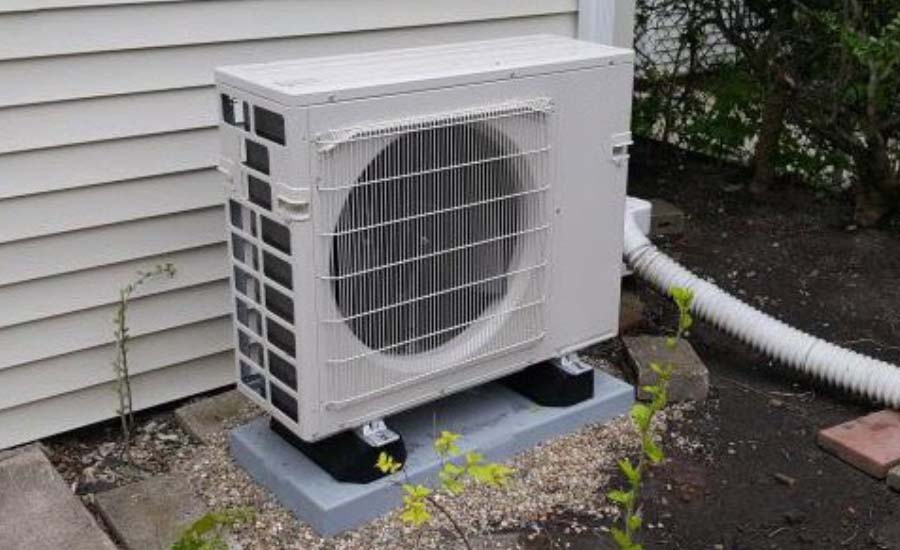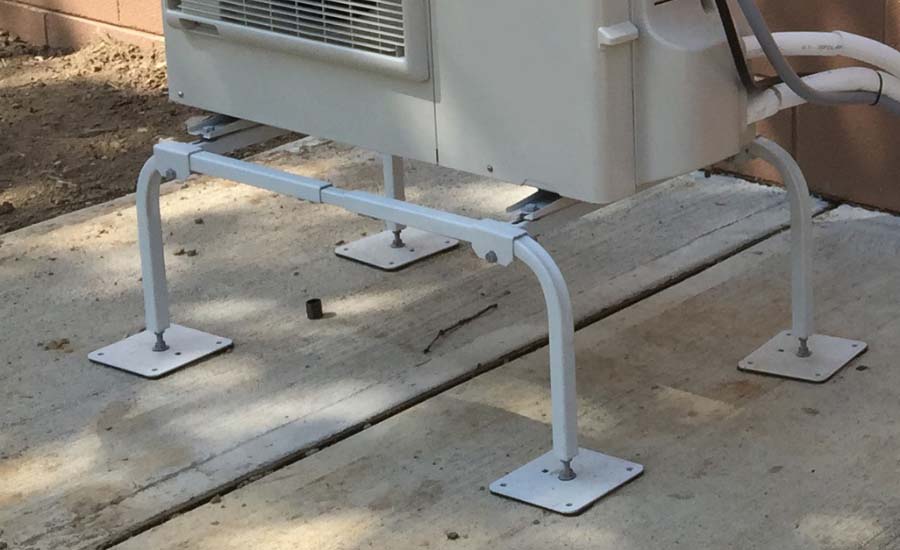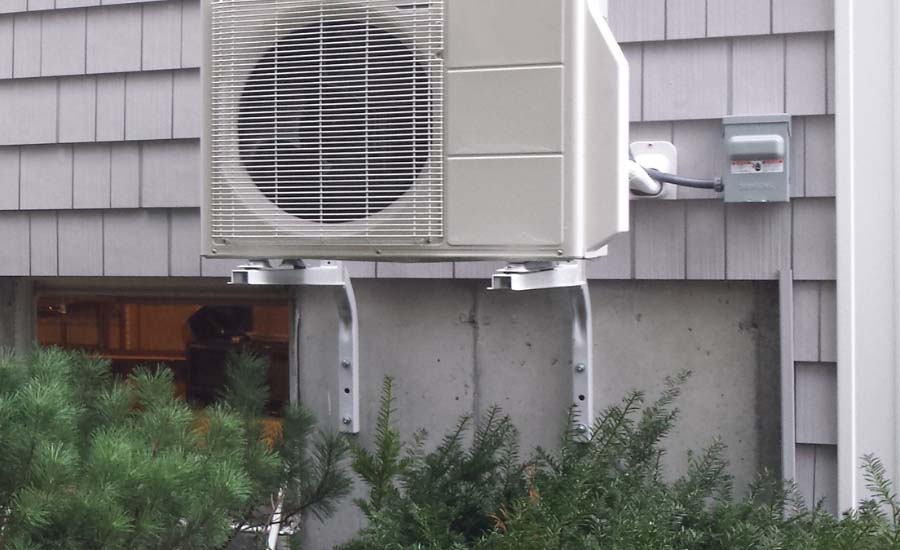Selecting the right mount for a mini-split condenser is a choice that is very important and often overlooked. This decision has a profound impact on various aspects, from the unit's operational efficiency to ease of maintenance. If a mini-split condenser is installed on an unsuitable mount, increased vibration, noise, and potential mechanical issues can come about. Factors like the manufacturer's specs, surrounding environmental conditions, and installation space constraints need to be considered. The mounting solution isn’t just a part of the installation process but a critical step to ensure sustainable functionality and efficiency of the mini-split system, protecting the investment in the home or commercial cooling solutions. We’ll explore the different factors to consider when choosing which equipment mount is best for the job.
What Mounting Options Are There?
Typically, there are three main categories for mini-split mounting products: pads, stands, and wall brackets. Each has its advantages and disadvantages, but it will always come down to the application.
1. PADS

Condenser pads like those offered by DiversiTech, are an essential mounting option for mini-split condensers. These platforms are characterized by their flat, robust construction, providing a level and stable base for the condenser. Pads come in two primary materials: durable concrete and lightweight composite; concrete pads offer unmatched strength and longevity, while composite pads provide ease of handling and installation due to their lighter weight. When selecting a pad, several critical factors come into play. The pad's size and load capacity must align with the condenser's dimensions and weight, ensuring a perfect fit and adequate support.
When Is a Pad the Best Option?
A pad is often the best mounting option in circumstances where ground stability, wind resistance, and unobtrusiveness are key considerations in areas. Pads offer a solid and level foundation, effectively minimizing the risk of the unit shifting or sinking over time. In regions that experience high winds, the weight and stability of a concrete pad provide an anchoring effect. Florida installers rely on DiversiTech’s line of hurricane pads, significantly reducing the chance of the condenser being dislodged or damaged. Moreover, for installations where a discreet, low-profile appearance is desired, pads offer a simple yet effective solution, blending seamlessly into the landscape.
2. MINI-SPLIT STANDS

Mini-split stands are specialized mounts designed to elevate condenser units above the ground. These metal stands are offered in a range of heights to cater to different installation needs. When choosing a mini-split stand, it's essential to consider the stand's height, ensuring it's appropriate for the specific environmental challenges of the location. Although these stands are made of metal, they can be made from aluminum, powder coated steel, stainless steel, or another metal – so selecting the material that will endure your specific weather conditions and bear the weight of the condenser without bending or breaking over time is paramount. Quick-Sling’s comprehensive selection of stands fits any installation application.
When Is a Mini-Split Stand the Best Option?
The right mini-split stand not only elevates the unit physically but also enhances its operational efficiency and longevity, making it a crucial component of the mini-split system installation.
The elevation a stand provides is particularly advantageous in areas prone to snow, flooding, or heavy rain, preventing potential water damage. Besides environmental protection, stands facilitate better airflow around the condenser which is crucial for optimal performance. They also make maintenance and servicing more accessible, as the unit is raised to a more convenient level.
3. WALL BRACKETS

Wall brackets are a versatile mounting option for mini-split condensers, typically made of strong, weather-resistant metals and are designed to be affixed directly to the exterior wall of a building. When selecting wall brackets, design should allow for some level of adjustment to ensure the condenser is mounted level, which is vital for its proper functioning. The 230-B3L wall bracket is a great example of a solution with this feature.
When Is a Wall Bracket the Best Option?
Wall brackets provide some of the same benefits as a mini-split stand: they provide protection from ground-level hazards like debris, water, or pests and facilitate improved airflow around the condenser. The additional benefit that a wall bracket brings to the table is that they are the ideal choice for situations where ground space is limited. In essence, wall brackets offer a blend of functional efficiency, space optimization, and aesthetic integration, making them an excellent choice for urban environments or where ground mounting is not feasible.
3 Factors When Choosing Your Mounting Solution
1. Compatibility
The factor of compatibility in mounting a mini-split condenser is the most important factor, encompassing the need to align with the manufacturer's specifications, and the dimensions and weight of the unit. Ensuring compatibility is a must for both the safety and efficiency of the installation. Firstly, adherence to the manufacturer's specifications is paramount. Ignoring the manufacturer specs can lead to improper mounting, which might compromise the system's efficiency and even void warranties.
A compatible mount ensures that the unit operates within its designed parameters, thus maximizing its lifespan. Compatibility also influences maintenance and service access. A properly sized mount will facilitate easy access for routine maintenance and repairs, which is essential for the long-term health of the system.
2. Geographic Location
Understanding the geographic location is the next factor in selecting the appropriate mounting option for a mini-split condenser. This factor is significant for two reasons: adherence to building codes and the potential influence of the local environment on a system.
Building codes vary significantly based on geographic location and are meant to ensure safe and proper installation. These codes can dictate whether a unit should be ground-mounted or elevated, influencing the choice between pads, stands, or wall brackets. In some coastal areas, for instance, codes may require elevated installations to protect against flooding, making stands or wall brackets the preferred options. Conversely, in urban or densely populated areas, codes might favor wall-mounted units to conserve ground space. Navigating these codes requires careful consideration and often consultation with local authorities or experts.
The local environment's impact on mounting equipment decisions cannot be overstated. Elevated mounts like stands or wall brackets protect units in areas prone to heavy snowfall or flooding from water damage and ensure uninterrupted operation. In contrast, regions with high winds might benefit more from concrete pads that provide stability and reduce the risk of the unit toppling or sustaining wind damage. Other environmental factors like humidity, temperature fluctuations, and exposure to saline air (in coastal regions) also influence the choice of material and design of the mounting equipment. For instance, corrosion-resistant materials are essential in high-humidity or saline environments. Thus, a thorough understanding of the local climate and environmental conditions is essential in selecting the best mounting solution for the installation.
3. Installation Location
By installation location, we are referring to the place where you are going to mount the actual unit. The installation location is the fundamental influence on the choice of mounting solution. It should take everything into account: specifications, system performance, clearance, aesthetics, environmental factors, and more. Hopefully, when all these aspects are taken into consideration, your mounting options will be narrowed down to your best couple options.
Ultimately, the right mounting choice maximizes the system's performance and longevity. Whether it's a pad, mini-split stand, or wall bracket, each option serves specific needs based on various factors like compatibility, geographic location, and installation location. By considering these elements carefully, one can ensure that the mini-split system operates efficiently, safely, and harmoniously within its environment.
DiversiTech offers a full range of HVAC equipment mounting products for both mini-split and conventional installations. To learn more about DiversiTech and the complete offering of HVAC solutions they have for mounting, condensate management, tools, electrical, and indoor air quality, please visit www.diversitech.com.






